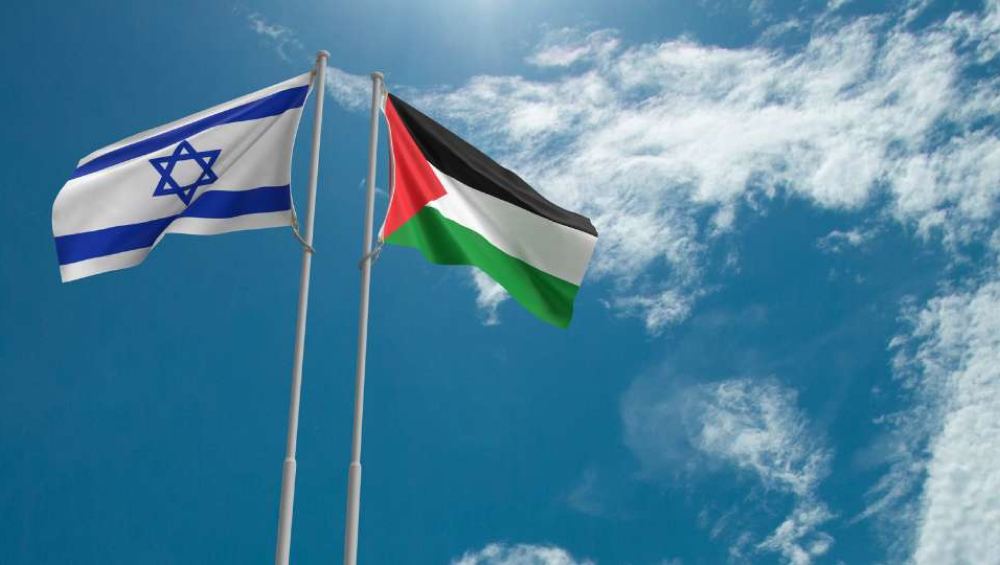On 7th October 2023, the Palestinian group Hamas launched a major attack on Israel, firing thousands of missiles from Gaza and crossing the border at multiple points. This led to armed militants entering Israeli towns, causing widespread destruction and loss of life.
These events in the Israel-Palestine conflict do not just affect the region. They also have significant impacts on global markets, especially the global crude oil market, which is highly sensitive to instability in the Middle East.
In this article, we explore how the conflict between Israel and Palestine influences oil prices.
What is the Israel Palestine Conflict About?
According to Global Conflict Tracker, the conflict between Israel and Palestine is deeply rooted in historical, political, and territorial disputes that have persisted for decades.
At its core, the conflict revolves around competing claims to land, particularly in the territories of Israel, the West Bank, and Gaza. The establishment of the State of Israel in 1948, following the United Nations’ Partition Plan, led to the displacement of hundreds of thousands of Palestinians, igniting the first Arab-Israeli War. Since then, tensions have escalated through a series of wars, territorial disputes, and failed peace negotiations, exacerbating the humanitarian crisis and perpetuating cycles of violence.
The latest escalation in the conflict, triggered by the Israeli government’s decision to evict Palestinian families from East Jerusalem properties, has reignited widespread protests and violence. Hamas, the militant group governing Gaza, and other Palestinian factions responded by launching hundreds of rockets into Israeli territory, prompting retaliatory airstrikes and artillery bombardments from Israel.
The recent violence caused many deaths, destroyed buildings, and forced many people to leave their homes. This shows that it is important to urgently find a peaceful solution to the conflict and fix the reasons behind it.

What Is the Effect of Gaza War on Crude Oil Prices?
The ongoing conflict between Israel and Hamas in the Gaza Strip has once again highlighted the intricate relationship between geopolitical tensions in the Middle East and global economic stability, particularly concerning oil prices. As rockets flew and airstrikes intensified, warning bells reverberated throughout financial markets, prompting analysts to assess the potential impact on one of the world’s most crucial commodities: oil.
This could not have come at a worst time as the global energy market is grappling with the aftermath of the Russian invasion of Ukraine, ongoing supply cuts by OPEC+ and also the Red Sea Shipping Crisis. Find out more about Why OPEC+ Is Cutting Oil Productions.
According to the Guardian, geopolitical unrest in the Middle East has been synonymous with volatility in oil markets historically. This correlation stems from the region’s significance as a major oil-producing area and its geopolitical sensitivity, often serving as a catalyst for fluctuations in oil prices. The rule of thumb in geopolitics suggests that recessions can be triggered by sharp jumps in oil prices, a sentiment underscored by the current conflict.
The 1973 Yom Kippur war provides a stark precedent. Israel’s counteroffensive prompted an oil embargo from the Organization of the Petroleum Exporting Countries (OPEC), leading to a fourfold increase in crude prices, skyrocketing consumer prices, and a phenomenon known as stagflation—characterized by soaring living costs and stagnant economic growth.
Today’s global economy, however, differs from that of the 1970s. While oil remains a vital commodity, its importance has diminished, thanks to increased efficiency in its usage. Nevertheless, oil prices are still sensitive to events in the Middle East, and the Israel-Palestine conflict has once again brought this reality to the forefront.
The potential scenarios emanating from the conflict offer insights into the possible trajectories of oil prices and their economic ramifications. In the best-case scenario, if the conflict remains contained to an Israeli ground assault on Gaza, oil prices could stabilize around their current levels. However, a broader regional conflict involving Hezbollah forces in Lebanon or Iranian intervention could escalate tensions further, leading to disruptions in energy supplies and a significant surge in oil prices.
Nicholas Farr of Capital Economics warns of the possibility of a broader regional conflict drawing in Iran and other Arab states, potentially propelling oil prices to $150 a barrel—a figure that could trigger double-digit inflation in the US and Europe and prompt central banks to intervene with interest rate cuts and quantitative easing.
The doomsday scenario, as envisioned by historian Niall Ferguson, introduces a nightmarish prospect: a third world war sparked by China’s opportunistic actions amid the Middle East crisis, leading to severed global supply chains, plummeting asset prices, and catastrophic economic consequences rivaling the Great Depression.
Ultimately, the extent to which the Israel-Palestine conflict influences oil prices and the global economy hinges on the escalation or containment of hostilities and the responses of key players, such as OPEC and major oil-producing nations like Saudi Arabia. As finance ministers and central bank governors worldwide brace for potential shocks, the interplay between geopolitics and oil markets underscores the delicate balance between peace and prosperity in an increasingly interconnected world.

Trading Crude Oil Futures from INE
The Shanghai International Energy Exchange (INE China) offers several commodities futures contracts for both international traders and domestic traders in China. This includes crude oil futures contracts such as Medium Sour Crude Oil Futures, Low Sulphur Fuel Oil Futures, and other popular commodity futures like Bonded Copper Futures, TSR 20 Rubber Futures, and the latest Containerized Freight Index Futures.
Since these commodities futures are available on different exchanges, traders can look to utilizing it for cross-arbitrage trading, such as refined copper arbitrage trading and rubber cross-arbitrage trading.
Traders would need to go through an Overseas Intermediary like Orient Futures International Singapore to trade crude oil futures from INE through either the QFI China Scheme or Internationalized Products from China.
Click here to know more about Brent Crude Oil Futures Contract, Brent Crude Oil Options and Brent Crude Oil Futures Symbol.
Start Trading with Orient Futures Singapore
Being an Overseas Intermediary of Shanghai International Energy Exchange (INE), Dalian Commodity Exchange (DCE), and Zhengzhou Commodity Exchange (ZCE), when foreign clients participate in internationalised futures contracts in these Chinese markets with us, they have direct access to trading, clearing, and settlement. Our parent company, Shanghai Orient Futures, is the largest broker in terms of aggregated volume across the five regulated exchanges in China.
Orient Futures Singapore also currently holds memberships at the Singapore Exchange (SGX), Asia Pacific Exchange (APEX), and ICE Futures Singapore (ICE SG). Starting August 2023, corporate clients can also gain access to the B3 Exchange through us.
We provide bespoke services to our professional clients, tailored to their corporate and individual needs. Our team will be there for you 24 hours on trading days to provide a one-stop portal for all your trades, with simple processes and an intuitive user interface that has low or near-to-zero latency.



